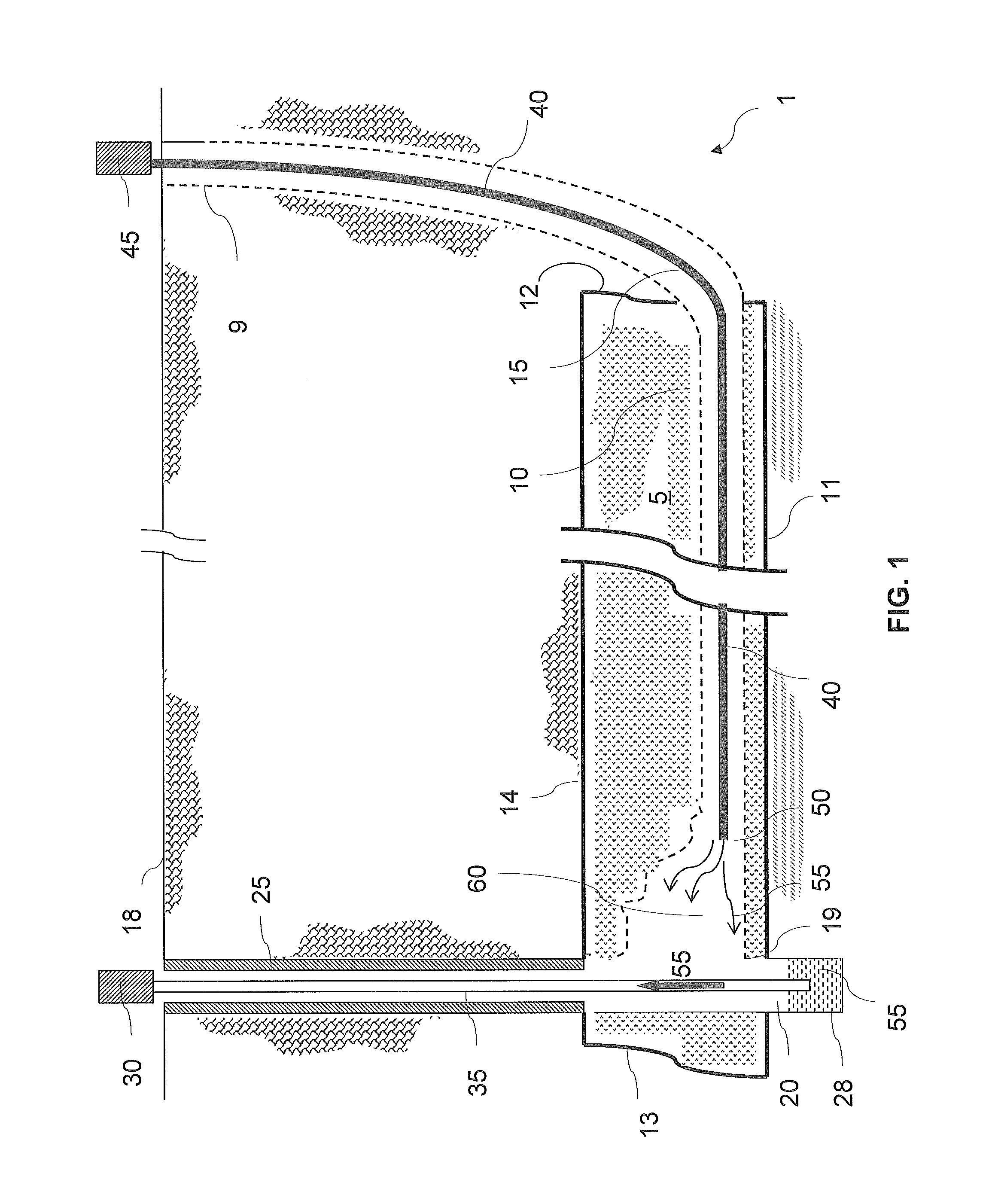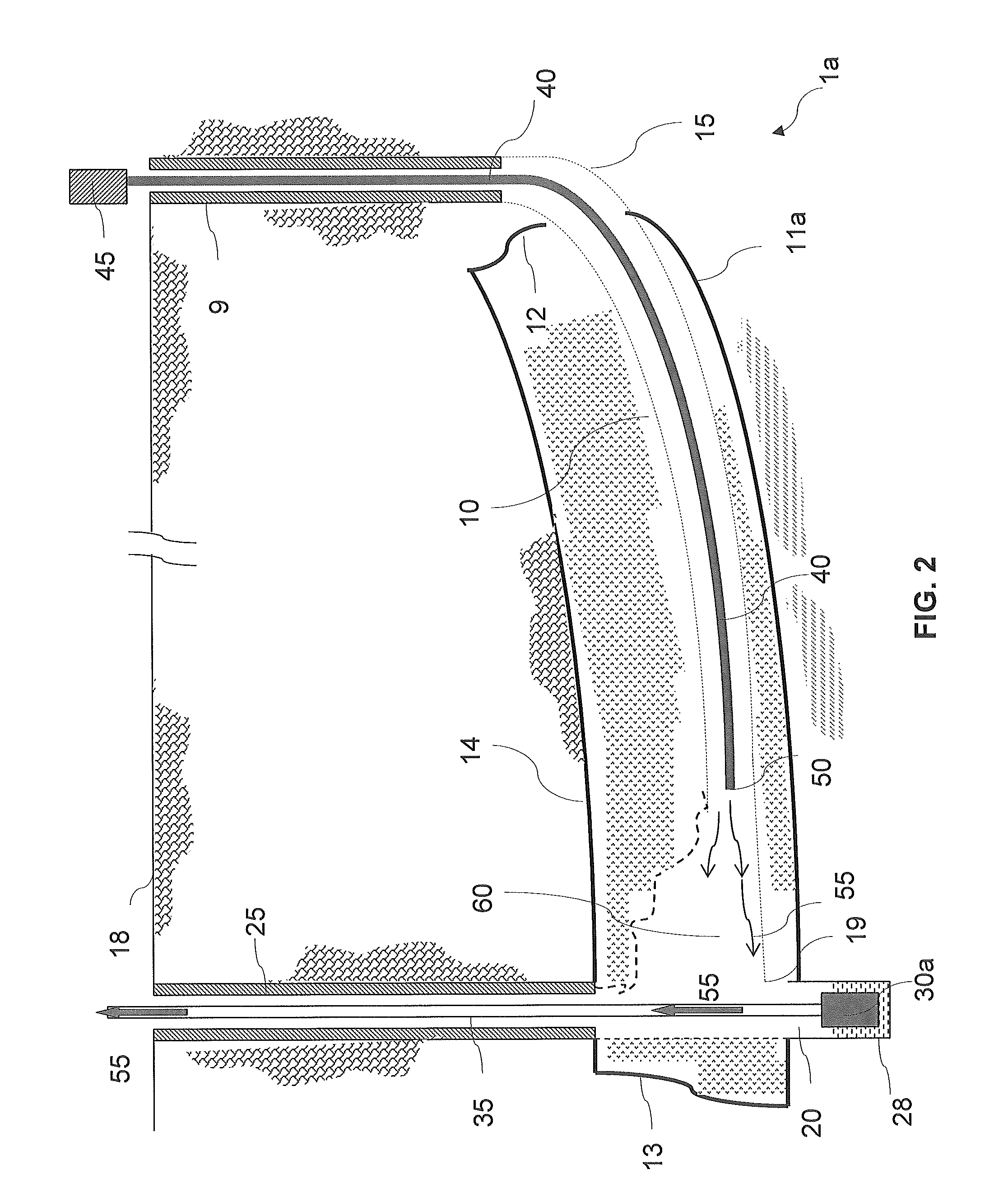Traveling undercut solution mining systems and methods
a solution mining and undercut technology, applied in surface mining, coal gasification, borehole/well accessories, etc., can solve the problems of reducing the value of the operator, and a large amount of money to mine, remove, and handle. , to achieve the effect of reducing or eliminating the co-production of insoluble contaminants and preventing or reducing the contamination of the resultant trona liquor
- Summary
- Abstract
- Description
- Claims
- Application Information
AI Technical Summary
Benefits of technology
Problems solved by technology
Method used
Image
Examples
example
[0301]Here is described a predictive example of how the in situ traveling undercut method according to the present invention may be carried out on a trona bed under some depth of significant overburden cover. The trona bed is located about 1500 feet below the surface, and contains virgin trona (that is say, a trona bed not previously mined). The trona bed may range in thickness from only a few feet up to several tens of feet (e.g., from 5 to 30 feet, or 5-15 feet). In this example the trona bed thickness is 10 feet. For this example, the target area is square with 2500 feet for each side, or one quarter square mile. The target trona zone is 10 feet thick by 2500 feet in length and width, dipping to the south at 1% slope. This volume represents approximately 4 million tons of in-place trona.
[0302]Applicants believe that the aerial limitations of this method are only defined by the capabilities of the machines required to layout and operate the solution mining system. Applicants canno...
PUM
 Login to View More
Login to View More Abstract
Description
Claims
Application Information
 Login to View More
Login to View More - R&D
- Intellectual Property
- Life Sciences
- Materials
- Tech Scout
- Unparalleled Data Quality
- Higher Quality Content
- 60% Fewer Hallucinations
Browse by: Latest US Patents, China's latest patents, Technical Efficacy Thesaurus, Application Domain, Technology Topic, Popular Technical Reports.
© 2025 PatSnap. All rights reserved.Legal|Privacy policy|Modern Slavery Act Transparency Statement|Sitemap|About US| Contact US: help@patsnap.com



